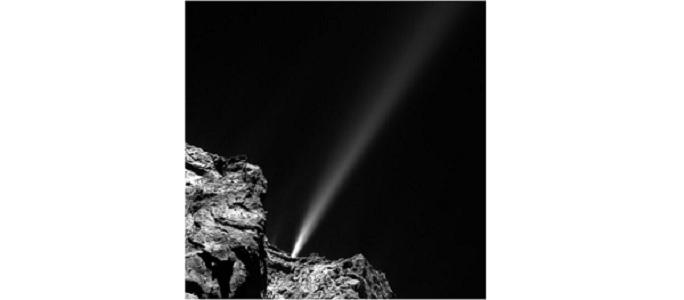 Example of a geyser eruption on a comet (comet 67P);
Credit: ESA
Example of a geyser eruption on a comet (comet 67P);
Credit: ESA
Luxembourg’s National Museum of Natural History (MNHN/natur musée) has reported that two of its team members were among the first people to observe a geyser erupting on a comet recently.
Matt Dawson, a research associate in the Geo/Astrophysics Section of the National Museum of Natural History, and Eric Buttini, head of the Geo/Astrophysics Section, have made their first astronomical discovery from a semi-professional observatory set up two years ago in Calabria, southern Italy.
According to the museum, they were the first to observe the eruption of a geyser on comet 29P Schwassmann-Wachmann, lying beyond the orbit of Jupiter at a distance of almost 1 billion km from Earth. Telescopes in Australia and the United States later confirmed their observation.
Comet 29P Schwassmann-Wachmann is a periodic comet discovered on 15 November 1927 by German astronomers Arnold Schwassmann and Arno Wachmann. The comet is also known for its unpredictable outbursts which can cause it to brighten significantly, up to five magnitudes in the space of a few hours, according to theskylive.com.
The Luxembourg team is participating in an international project to monitor this comet for signs of activity. Their observation helps scientists further their understanding of the comet’s activity and makes Luxembourg one of the main active observatories participating in this project, noted the museum.








